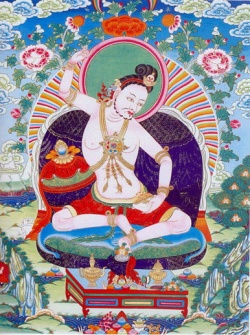Annotations on the Mahavairochana Sutra
Annotations on the Meaning of the Lotus Sutra
法華義疏
(1) (Chin Fa-hua-i-shu; Jpn Hokke-gisho )
A twelve-volume work by Chi-tsang (549-623) of China who systematized the doctrines of the Three Treatises (Sanlun) school. Chi-tsang highly esteemed the Lotus Sutra and wrote several commentaries on it. The Treatise on the Profun dity of the Lotus Sutra is another of his major works. In The Annotations on the Meaning of the Lotus Sutra, he supports his views with quotations from various sutras, treatises, and commentaries, and with interpretations of the Lotus Sutra put forth by other scholars. For this reason, this work is valued for the study of not only Chi-tsang's but also other Chinese scholars' views on the Lotus Sutra.
(2) ( Jpn Hokke-gisho ): A four-volume work attributed to Prince Shotoku (574-622), the second son of Template:WikidictionaryEmperor Yōmei of Japan. This work is one of the three commentaries attributed to Prince Shotoku, the other two being commentaries on the Shrimala and Vimalakirti sutras. Though based on Fa-yyn's Meaning of the Lotus Sutra, it includes original opinions and interpretations regarding the Lotus Sutra of the Wonderful Law, or Kumarajiva's translation of the sutra. The existence of such an in-depth work in the very early stage of Japanese Buddhism deserves attention. The original text is extant.
